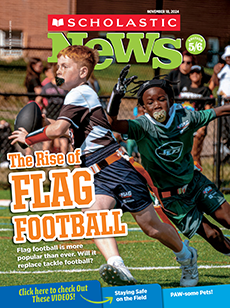Kelly Sansom/Gallery Photography
Remi puts on her Hero Arm.
Remi Bateman loves riding her bike around her neighborhood. But until recently, she could grab only one of the handlebars.
Remi was born with a left arm that stops just below the elbow. She wears a prosthetic arm, but her old one was stiff, and she couldn’t control the fingers. She needed help to do many everyday tasks, like cutting up her food or tying her shoes.
But now Remi has a new robotic arm that has changed her life. Called the Hero Arm, it has special technology that enables her to grip even tiny objects. She can do things that were impossible before, like stringing beads onto a necklace.
“I don’t have to ask for so much help anymore,” says the 10-year-old from Bountiful, Utah.
Getting a Hero Arm inspired Remi to help other kids like her get robotic arms of their own.
Remi Bateman loves riding her bike. But until recently, she could grab only one of the handlebars.
Remi was born with a left arm that stops just below the elbow. She wears a prosthetic arm. But her old one was stiff, and she couldn’t control the fingers. She needed help with tasks like cutting up her food or tying her shoes.
But now Remi has a new robotic arm that has changed her life. It’s called the Hero Arm. It has special technology that allows her to grip even tiny objects. She can do things that were impossible for her before. For example, now she can string beads onto a necklace.
“I don’t have to ask for so much help anymore,” says the 10-year-old from Bountiful, Utah.
Getting a Hero Arm inspired Remi. She wanted to help other kids like her get their own robotic arms.

